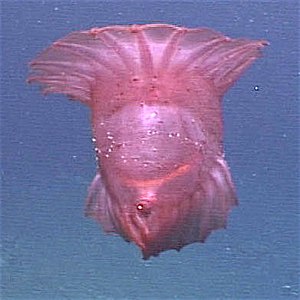Feature:
8 Unexpectedly Beautiful Sea Creatures
"...when is the last time you paid mind to the humble snail or mollusk? In 2019, a lobsterman in Maine reminded us of the lesser-known beauties of the ocean when he caught a rare cotton candy lobster, named, & admired for its bright blue, pink, & purple shell. If a species as pretty as this is lurking in the water, what other beautiful sea creatures are out there?
1. Nudibranch
You probably know of nudibranchs by their informal name: sea slugs. These soft-bodied marine mollusks include more than 3,000 species & live in seas all over the world.
Nudibranchs can be a variety of bright, beautiful colors & patterns. This is a defense mechanism because of their lack of shell. They resemble the plants around them to camouflage themselves from predators. Additionally, bright colors scare away potential dangers as they generally signal that a creature is poisonous (even if it isn't).
2. Coconut Octopus
The coconut octopus is considered one of the most intelligent invertebrates in the animal kingdom. It impressively uses tools — such as coconut shells — to conceal itself & protect from predators.
When it's not hiding in a self-made bunker, the coconut octopus is a beautiful sea creature. Its appearance is notable for its contrast between light & dark tones. The textured pattern of its main body is reminiscent of snakeskin, & light-colored suckers pop underneath the darker body as this cephalopod swims & even walks along the ocean floor.
3. Brittle Star
Closely related to starfish, brittle stars move briskly along the seafloor, thanks to long, slender arms. Their attractiveness can be attributed to their symmetry, with each arm protruding from a central disk.
Brittle stars are majestic & agile in their movement. They combine a graceful, snakelike quality with flexibility to pull themselves toward their intended direction.
They are also excellent multitaskers, with a 5-jawed mouth & the ability to regenerate lost arms.
4. Mantis Shrimp
Neither a shrimp nor a mantis, this stomatopod is only 4 inches long. With a long, colorful body & big, bright eyes, the mantis shrimp surely turns heads.
However, this sea creature is more dangerous than it lets on. It uses its tiny but powerful clubs to break the shells of its prey with punches with the force of a .22 caliber bullet. In fact, when being studied, scientists must keep mantis shrimp in thick plastic tanks because their powerful punches can actually break glass.
5. Leafy Seadragon
Though they may look like pieces of seaweed, the leafy seadragon is a fish related to the seahorse. Known as 'leafies,' these creatures are kings of camouflage, living among kelp and seaweed in the waters off south & east Australia.
The flowing protrusions may look like functioning appendages, but the leafy seadragon uses thin, nearly transparent fins to propel itself through the water. Most impressively, this beautiful sea creature has the ability to change color to match its surroundings for better camouflage.
6. Flying Gurnard
The flying gurnard is most notable for its eye-catching 'wingspan.' Gurnards usually keep their huge pectoral fins held close against their body, but they flare out spectacularly when a predator is near. The transparency of the fins combined with the blue spots that adorn them make this creature especially beautiful underwater.
While their name suggests that they fly through the water, flying gurnards are bottom dwellers. Their large fins do little to help them swim — they don't soar so much as move in short bursts. The name gurnard is derived from the French word for 'grunt,' which is the sound made by their swim bladder as water moves through it.
7. Christmas Tree Worms
One look at a Christmas tree worm is all it takes to know where they get their name. These beautiful creatures are scattered throughout tropical oceans worldwide, but you'll most likely find them embedded in coral reefs. The feathery 'crowns' that give them their distinct yuletide appearance act as both a filter for food & a harness for oxygen. Each worm has 2.
Unlike their namesake, Christmas tree worms come in a variety of colors including red, blue, orange, & yellow. They can live for as long as 40 years, making them a much better investment than your typical Christmas fir tree.
8. Enypniastes Eximia
Despite being discovered in the 1880s, the enypniastes eximia was not caught on camera until 2017. This genus of deep-sea sea cucumber is unkindly called a 'headless chicken monster' by scientists, & it has neither a true brain nor sensory organs. Still, it plays a valuable role in filtering sediment off the ocean floor.
The colors of the enypniastes eximia vary from bright pink to reddish-brown. Notably, it is also transparent, which allows its digestive system to be visible."
by Lindsey Reynolds
Nov. 6/2020
treehugger.com








No comments:
Post a Comment